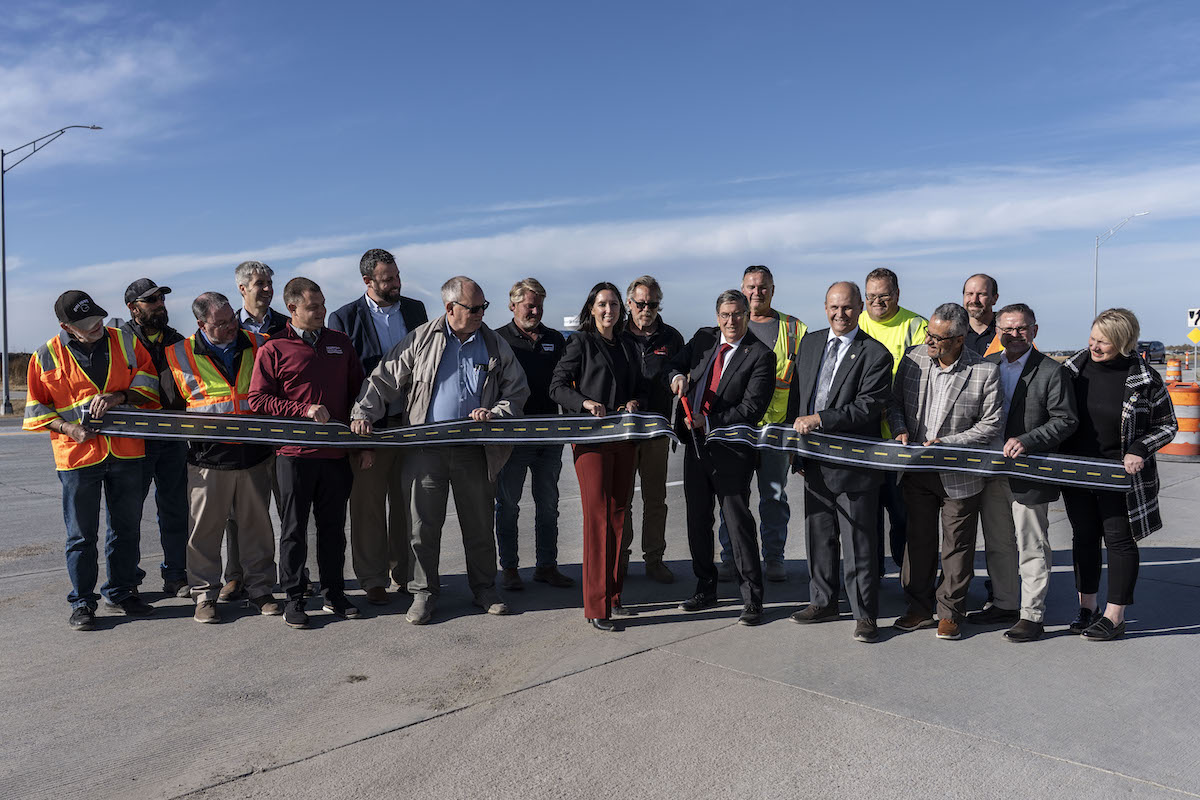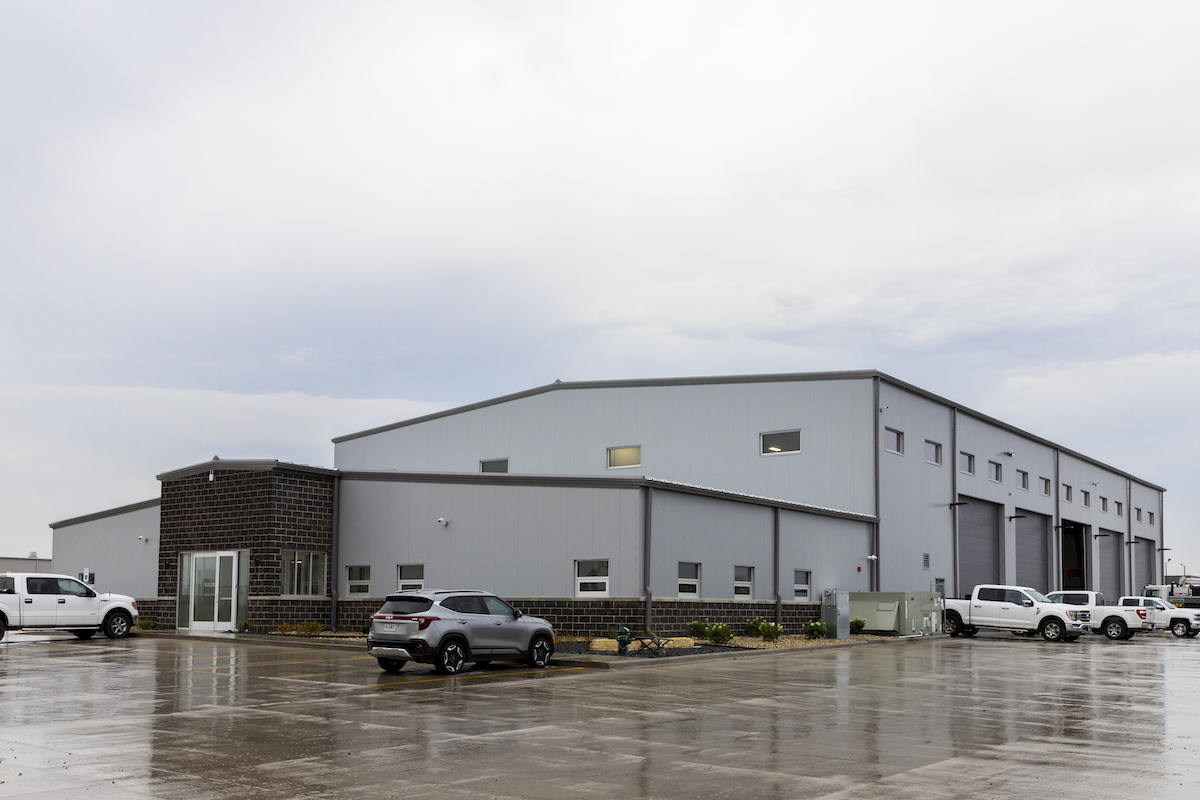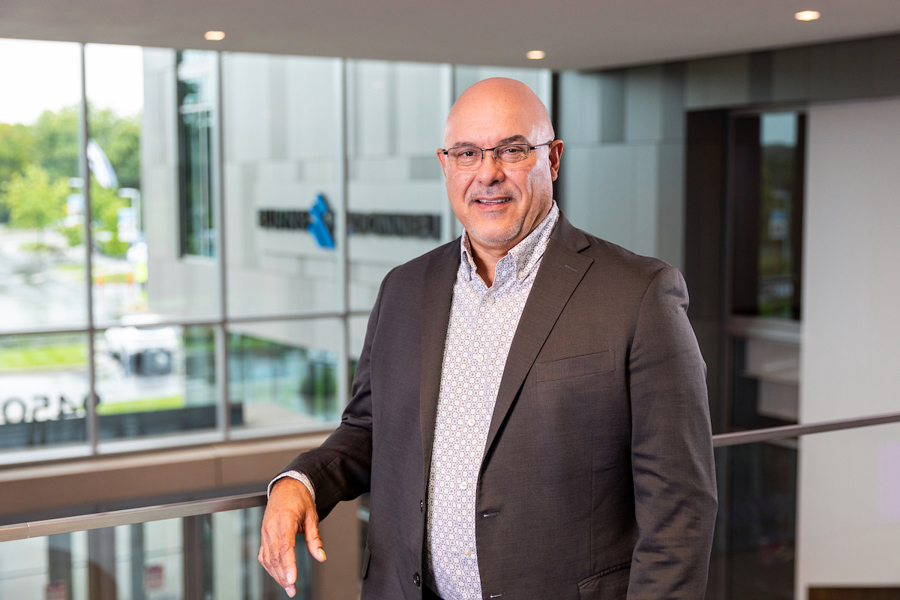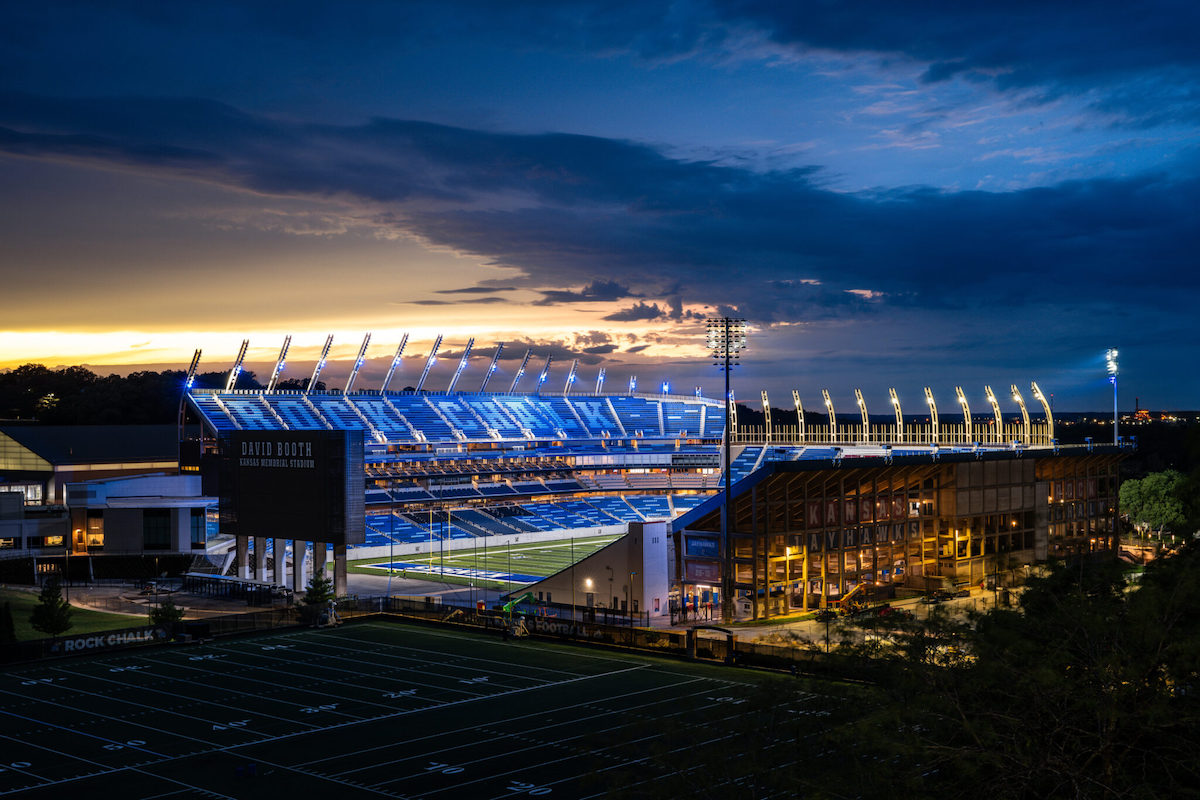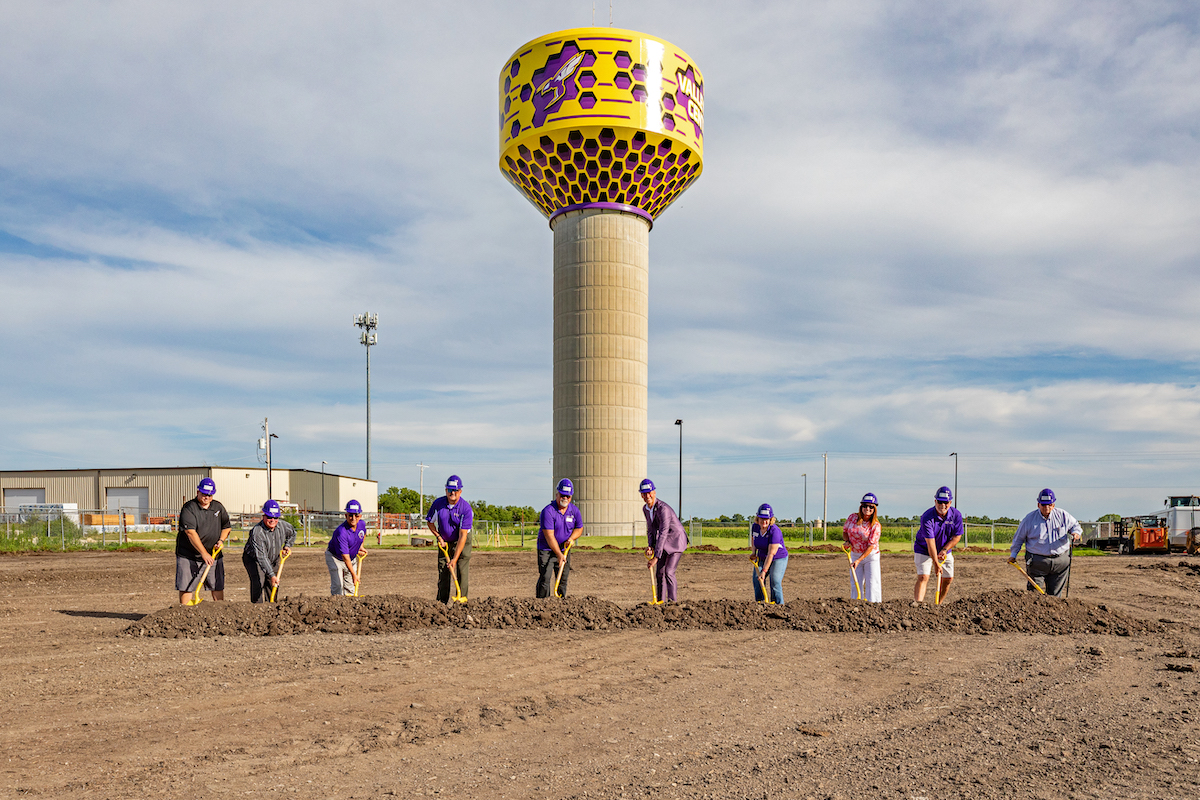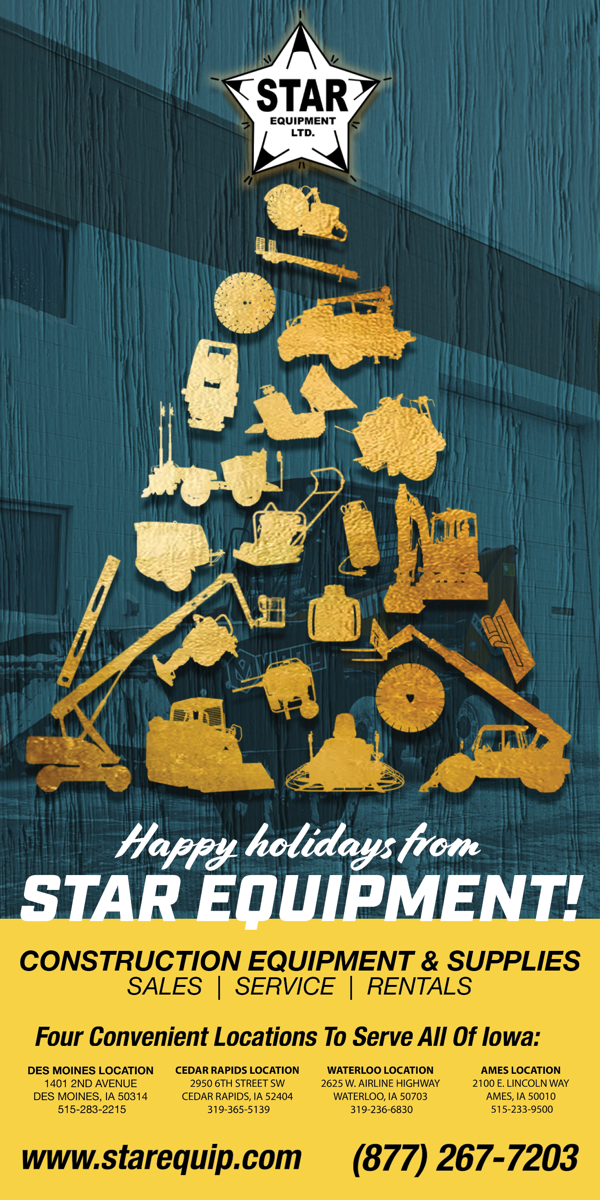It’s a milestone on a journey as opposed a destination. For me, it's a great accolade, but I wake up every morning, thinking, ‘what am I going to do today to continue to earn that?'
For the AIA College of Fellows, there are six potential objects that you can submit for. This was not my first submission. This year, I submitted for Object Five, which is Service to Society. It was the best fit for me with a combination of exhibits that are built around my contributions to AIA National, AIA Indiana, AIA Indianapolis, and state and city community involvement.
Those local exhibits include things like serving on a committee that did early public engagement and planning for the Monon Trail. I've also chaired and served as a member of the Riley Area Development Corporation Board of Directors.
A big difference for me this year was a new exhibit built around my role as AIA Indiana State Disaster Coordinator. Basically, it's disaster response and mitigation. My role is working with I-BEAM (Indiana Building Emergency Assessment and Monitoring) at a state level. It was born out of a bad tornado that hit southern Indiana in November 2005. I-BEAM was formed shortly after that to be a state level response group. Our role is to go into a town hit by disaster, evaluate buildings, and determine which are still safe or inhabitable.

| Your local Manitou dealer |
|---|
| Star Equipment LTD |
Where did you grow up? Why did you choose a career in architecture?
I was born and raised in Monticello, Indiana. My dad was a plumber and HVAC contractor. Through working with him on multiple home building projects, I learned about construction. In high school, I took all the drawing classes that I could like mechanical and architectural drafting.
What was also instrumental for me was I graduated in 1976. In April of 1974, Monticello was hit with three tornadoes that converged on the town at the same time. I saw firsthand the power of Mother Nature. Even more important for me, I saw the people who showed up to help put the town back together. The Army Corps of Engineers, the American Red Cross, all these people that came to help the town I grew up in. I think in the back of my mind, whether I realized it or not at the time, there was this thought planted that someday it's going to be your turn to do this. That's kind of what led me to emergency response. It’s personal to me.
Is there anyone who you feel has helped mentor you or taught you how to succeed in the architecture profession?
A lot of different people have taught me things like how to how to work with clients, how to run meetings, how to keep a design process going, and quite simply, how to lead. Wayne Schmidt, Ron Fisher, Dean Illingworth, and Tony Costello have certainly been invaluable mentors to me, but so have many other people here in the office over time.
I joined Schmidt in June of 1983, so you can imagine how many people I've seen come through our doors. Hundreds of people have come through here, and you learn a lot from people because our work environment is highly collaborative.
Are there any projects that you are most proud to have worked on or that you think are especially interesting?
Probably the ones that are most impactful to the communities that they're in. Ivy Tech Illinois Fall Creek Center. Plainfield High School, which was an all-new high school for 2,000 students. North Central High School, which I'm working on right now, is special to me because I live in Washington Township and that's where my son went to high school. I’ve been fortunate to do a lot of performing arts facilities and those are very special and challenging as well. Projects such as the Goshen College Music Center, Indiana State University Center for the Performing Arts, and the Bucknell University Sigfried Weis Music Building, to name a few.
As areas like learning risers and flexible collaboration spaces have become commonplace in educational designs, have you noticed any elements of school buildings that have become more prevalent in educational designs?
Those two examples are certainly in the mix of most school designs today. Fieldhouses are also more prevalent. Instead of a multi-court gym and an auxiliary gym. They might build a Fieldhouse with three basketball courts, a running track, that maybe even accommodates a high jump and pole vault pit. It can become a revenue-generator for their corporations through tournaments in a larger space, and it’s also larger and more flexible in its use opportunities.
Beyond that, schools have moved away from the traditional industrial arts shop classes. While they still happen in some areas, those have evolved into more of a technology and process-driven program approach that is digital and computer centric.
Technology is probably the single most impactful change because that deals with the pedagogy that allows teachers to do what they do in new and more meaningful ways. It's about adapting to the way teachers want to teach today’s students and the new tools that are available to them to do so. We work with the teachers and administration, and a big part of it is understanding their wants and needs and how you can help them by providing for their current needs with enough flexibility for growth to adapt to what future technologies may allow them to do.
How do you see educational design evolving in the coming years?
It's going to be about adapting to what the need is, rather than what we want. Educational delivery, and how they want to teach, is going to drive that. What you try to do is accommodate flexible change. You make spaces big enough that they can adapt, spaces that can maybe transform from two spaces into one with an operable wall between them. You try to do things that are flexible and allow for the evolution of that educational delivery, without necessarily knowing exactly what that is.
What advice would you give to a young architect beginning his or her career in design?
I think when you get out of school, you have a vision of how things are going to go. And the reality is, in a lot of situations, you may not get all the opportunities to design early in your career that you want. It’s important to gain knowledge in a foundational way. The phrase I use, especially when you start out, is ‘you don't know what you don't know’. It’s easy to assume that you know things that you don't. You must be a good listener when you're meeting with both clients and colleagues trying to understand what they want and need. You must listen well and interpret what that means in terms of not only physical space, but the accommodations of the equipment and elements in that space.
I’ve been fortunate here. Schmidt is my only firm, other than my internship at Hope Consulting Group in San Diego. I've had opportunities to go elsewhere, but always believed that if you enjoy the work you do, you like the people that you work with, and you feel sufficiently challenged and compensated, do you need a whole lot more?
I was the 41st person the firm ever hired, but we were not a firm of 41 when I started. We were a firm of 12, so the feeling of an office family was fostered early. Now, we're probably around 120 people with offices in Indianapolis and Louisville, Kentucky. Somehow, even with a group that size, we’ve managed to maintain that feeling of family.
How does Schmidt maintain that family atmosphere as the firm continues to grow?
It becomes more about personal relationships and caring for each other. A lot of that is done through our annual career pathing process, which is driven by a desire to help our staff meet their personal growth goals and how we can help them achieve those goals and enhance their skillsets in the process. We have a group of people that are known as Sherpas who work with people after they've just been hired to help get them acclimated. The Sherpa is someone who's maybe more at their level who can be a friend and help guide them with questions they don't know the answers to, direct them to people, and help nurture their early development to make them feel more intentionally invested in right there at the beginning.
Later, you’ll get a mentor who will guide your annual career pathing sessions. Those sessions are intended to help people intentionally think about where it is they want to go, personally and professionally, what they want to achieve, and what the best ways are to get there.
What are a few of the most important lessons you have learned in your professional life?
I think it boils down to being a good listener. There's a phrase that Stephen Covey uses (Covey is the author of The 7 Habits of Highly Effective People.) His statement is, “seek first to understand, then to be understood.” That has everything to do with listening. It's always been about servant leadership for us. It's about learning enough about the people that you're working with – clients, especially – to know what they want before you start telling them how they can get there.
People don't care what you know until they know that you care. And that means working with people enough that they understand that you're on their side and that you're trying to help them improve their situation, to even take them beyond that to deliver the ‘wow’. When they truly believe you, they will allow you to lead them into what the future might look like for them.
What else should people know about you and your career?
Early on, Wayne and Dean Illingworth were two big influences. Both encouraged early involvement in AIA, so I did that at the local level. But it was really Wayne, because I was talking to him about an interest in the AIA Committee on Design. I’d gone to national conventions and things, but he encouraged and supported my involvement in the COD.
I've always considered myself one of the worker bees. I'll help people get things done all the time. But what I didn't envision, relative to the COD, is all the people I’ve met that are the top design minds in the world. It's been great because they've been really open and engaging in conversations and have become great friends.
Did I know when I attended my first COD Conference in San Diego in 2003 that in 2014 I would become their National Chair? It wouldn't have been on my radar, let alone even be in my head as a possibility. There are all these things where you take these little leaps. And if you just follow them for a while, they can lead to some amazing things. For me, my AIA service has been a natural extension of my servant leadership and the joy I get from simply helping others. That’s a trait that comes straight from my father.




















